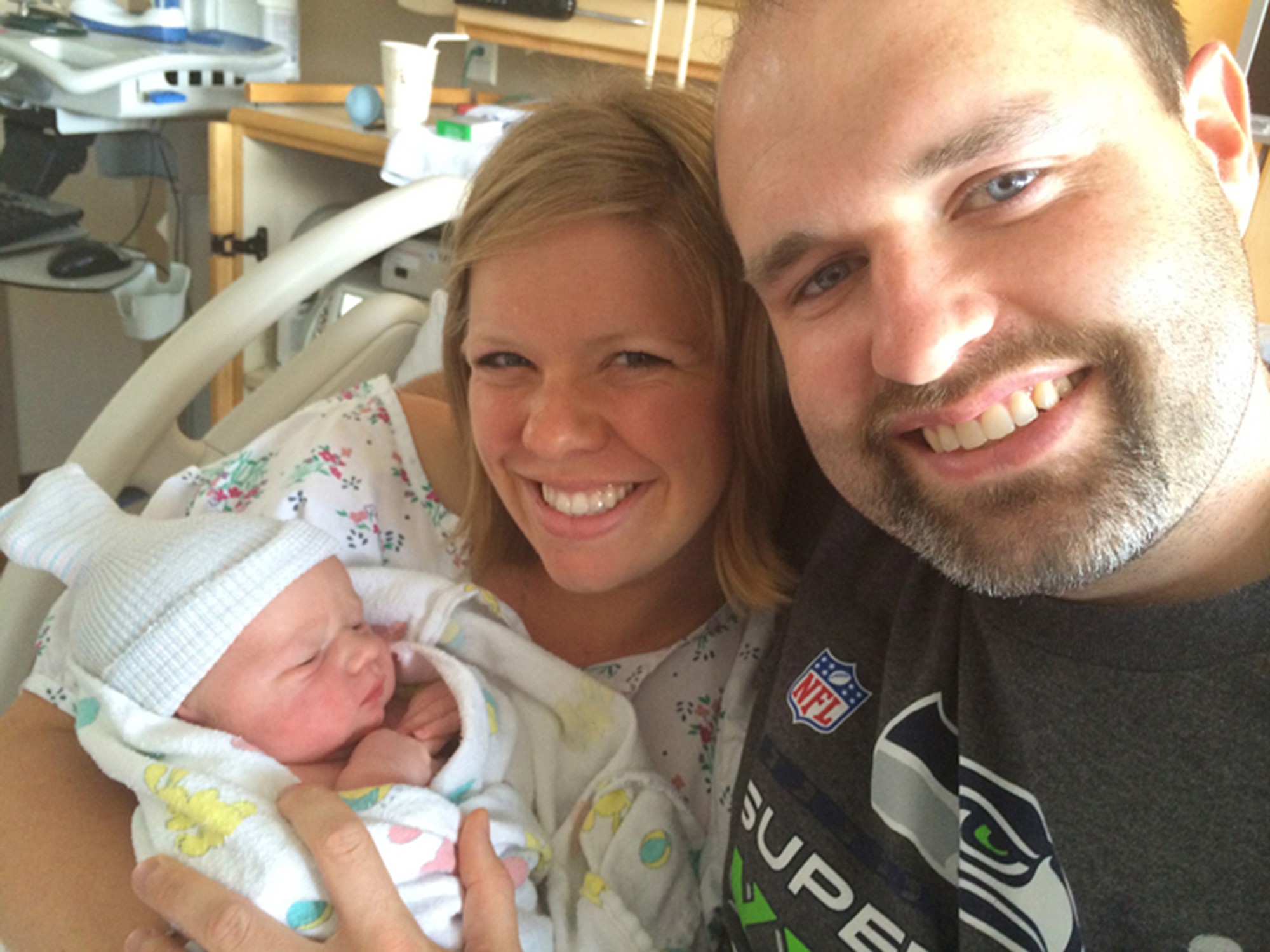SEATTLE — Like other first-time parents, Carl Field and Christy Olsen Field had dozens of details to finalize as they prepared for their son’s birth last August.
But unlike most parents in Seattle and elsewhere, the Ballard couple made sure to stress one crucial item on the birth-plan checklist: Donate the baby’s umbilical cord blood to a public cord-blood bank.
“We had a few different doctors right at the end of our pregnancy,” recalled Christy Olsen Field, 29. “We told each of them that we wanted to do the cord-blood donation. We had to tell them that we wanted to do it.”
The doctors supported the Fields’ desire to donate cord blood, a rich source of stem cells that can be used for lifesaving transplants for people with cancer and other diseases. But the practice is far from routine.
Only about 20 percent of eligible local parents donate their newborns’ cord blood to public banks. Otherwise, it’s discarded as medical waste.
In addition, only about a quarter of local hospital staffers are trained and certified to be able to collect cord blood, said Dave Larsen, director of communications for Bloodworks Northwest, formerly Puget Sound Blood Center. And, in the past, few area hospitals were part of the program that allowed patients to donate.
So the Fields say they felt like they had to be especially insistent to ensure they could preserve the donation after their baby, Carl V, was born.
The few ounces of blood collected come from the umbilical cord and placental vessels. The blood must be retrieved right after birth and frozen within 48 hours, according to the federal Food and Drug Administration, which regulates the practice.
“If you miss that window, it’s gone,” said Christy Olsen Field, a grant writer for the Nordic Heritage Museum. “There’s just a huge number of people who don’t know and just throw it out.”
The situation has been changing, although slowly. Last month, Bloodworks Northwest added Tacoma General Hospital to the program, bringing the total number of regional hospitals to 12, and adding the potential for cord-blood donations from more than 3,000 babies each year.
All told, about 31,000 babies are born in the regional partner hospitals each year. But only about 6,000 cords are donated to the Bloodworks’ public bank, Larsen said.
“The biggest thing has always been raising awareness by new moms that this is actually an opportunity for them,” Larsen said.
One issue has been that expectant parents are often flooded with offers during pregnancy to preserve cord blood in private banks as a hedge should their own child develop an illness later in life. If the child needed a lifesaving stem-cell transplant, for example, his or her cells would be available to provide it, according to companies such as Viacord and CryoCell International.
For-profit companies charge between $1,200 and $2,000 to collect and process the blood, and then about $175 a year to store it, presumably for decades. Most health-insurance providers don’t cover the cost, although company officials say they’ve arranged discounts with some.
But groups such as the American Medical Association encourage public banking, and the American Congress of Obstetricians and Gynecologists says the chance of a child needing his or her own cord blood is remote — as low as 1 in 2,700 people.
Public banks
Public banking, in contrast, is free to the donor families. It creates a wider pool of donors to increase the chance that people who need stem-cell transplants will actually receive them, according to Be the Match, the national program that advocates for bone-marrow and cord-blood donations.
The American Academy of Pediatrics, which has recommended public banking in the past, says exceptions include situations in which an infant has a full sibling with cancer or a genetic condition treatable with cord-blood transplants.
The AAP is now rewriting its cord-blood guidance, with new consideration of the possibility of using cord blood for regenerative-tissue purposes, said Dr. William T. Shearer, a professor of pediatrics and immunology at Baylor College of Medicine, who authored the past guidelines. Future research could bolster the argument for private banking.
But for the Field family, donating to a private bank was never an option. Carl Field, 30, an adviser for the University of Washington Physicians practice group, is a frequent blood-platelet donor and serves on a board for the blood center. Through that work, he learned about uses for cord blood, which range from clinical transplants to research.
“The potential use of (private banking) is so much smaller than the potential use of someone else needing it,” he said.
The Bloodworks Northwest public bank has been collecting cord blood and preserving the donations in liquid nitrogen since 1997. The bank now boasts 11,000 units in storage.
There are about 100 “matches” each year — situations in which certain blood proteins of the donor match those of a person who needs a transplant to treat dire illness.
Caycee Holt, a Seattle mother of three, got a call a few years ago that the cord blood she donated after the birth of her son, Chase, now 6, was matched with a 15-year-old girl with non-Hodgkin lymphoma, a blood cancer.
“That’s the best call I’ve ever taken in my life,” Holt said. “I like to believe maybe she’s living a beautiful love- and light-filled life in some small part because I donated.”
The Fields agree. They plan to tell Carl V, now 7 months old, about his cord-blood contribution when he’s old enough.
“I’d like to see every obstetrician tell their parents: This is a great program, and you should do it,” Christy Olsen Field said. “It’s such an easy way to save a life.”



